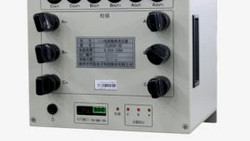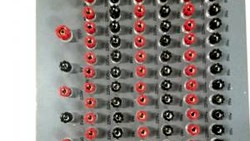The headlines are buzzing: Germany's first inductive autobahn stretch is live, Paris is testing a 200 kW E-Road, and the media is giddy over the idea of charging electric vehicles while driving—no plugs, no pit stops, just seamless power transfer under the tarmac. It sounds like science fiction finally rolling onto the autobahn. But for those of us who've spent years in the trenches of metering and energy technology, it's hard not to feel a sense of déjà vu. After all, we've seen inductive charging up close—long before it was headline material—and the reality is a bit less electrifying.
The Physics Don't Lie
A decade ago, we were already experimenting with inductive charging in dedicated parking lots. The idea was simple: park your EV over a coil, and let the magic of electromagnetic fields do the rest. The reality? Not so magical. Even with stationary vehicles, perfect alignment, and careful calibration, the efficiency losses were hard to ignore. Air gaps, stray fields, and the inherent inefficiency of wireless power transfer meant that a significant chunk of the energy simply vanished before reaching the battery. And that was with cars parked neatly in place.
Now, imagine taking that system and putting it under a motorway. Vehicles are moving—sometimes quickly, sometimes not so steadily, rarely perfectly aligned. The coupling between the coils in the road and those in the car becomes even less reliable. The result? Even higher losses, more wasted energy, and a technical challenge that makes stationary inductive charging look like child's play. It's a bit like trying to pour coffee into a cup while both are on a moving train—some will get there, but you'll be cleaning up the mess for a while.
The Billing Conundrum
Of course, it's not just about getting the power from A to B. Someone has to pay for it, and that's where the real fun begins. With plug-in charging, the process is straightforward: connect, measure, bill. With inductive charging—especially on the move—every vehicle needs its own certified, tamper-proof smart meter. It's the only way to ensure that drivers are billed for the energy they actually receive, not just what the road transmits. Otherwise, it's like trying to charge for water with a leaky hose—nobody's happy, least of all the utility.
The complexity multiplies when you consider roaming vehicles, multiple operators, and cross-border travel. Accurate, fair billing requires not just robust metering hardware, but also secure data communication, reliable identification, and a billing system that can handle the nuances of mobile energy transfer. It's a metrologist's nightmare and a hacker's dream.
Standardization and Interoperability
And then there's the small matter of getting everyone to agree on how it all works. Different car manufacturers, road operators, and utilities all have their own ideas about protocols, calibration, and certification. The European "plug wars" of the past look tame compared to the challenge of standardizing inductive charging across brands and borders. Without common standards, drivers could find themselves locked out of charging lanes or facing a patchwork of incompatible systems—a recipe for frustration rather than convenience.
The Road Ahead—Opportunities and Open Questions
None of this is to say that inductive charging on the move isn't worth pursuing. The potential benefits are real: less range anxiety, more convenience, and a genuine wow factor that could help drive public acceptance of electric vehicles. But the technical, economic, and regulatory hurdles are substantial. Efficiency needs to improve, metering must be rock-solid, and the entire ecosystem—from hardware to billing—has to work seamlessly.
As someone who's watched more energy disappear in a parking lot pilot than our intern loses pens in a week, I can't help but approach these new projects with cautious optimism. The promise is there, but so are the pitfalls. Until we see efficiency curves that make sense and billing systems that can be audited without a PhD, inductive charging will remain more of a headline than a highway reality.
Takeaway
Inductive charging on the move is a compelling vision, but the devil is in the details. Efficiency losses, metering challenges, and the need for industry-wide standards mean that, for now, the dream is still chasing the technology. As always, the real world has a way of humbling even the most electrifying ideas.








All comments are moderated before being published. Inappropriate or off-topic comments may not be approved.